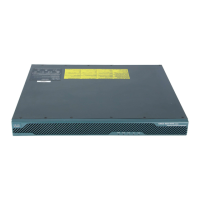24-3
Cisco ASA 5500 Series Configuration Guide using ASDM
OL-20339-01
Chapter 24 Configuring Multicast Routing
Guidelines and Limitations
Guidelines and Limitations
This section includes the guidelines and limitations for this feature.
Context Mode Guidelines
Supported in single context mode. In multiple context mode, unshared interfaces and shared interfaces
are not supported.
Firewall Mode Guidelines
Supported only in routed mode. Transparent mode is not supported.
IPv6 Guidelines
Does not support IPv6.
Enabling Multicast Routing
Enabling multicast routing lets you enable multicast routing on the adaptive security appliance. Enabling
multicast routing enables IGMP and PIM on all interfaces by default. IGMP is used to learn whether
members of a group are present on directly attached subnets. Hosts join multicast groups by sending
IGMP report messages. PIM is used to maintain forwarding tables to forward multicast datagrams.
Note Only the UDP transport layer is supported for multicast routing.
To enable multicast routing,perform the following steps:
Step 1 In the main ASDM window, choose Configuration > Device Setup > Routing > Multicast.
Step 2 In the Multicast pane, check the Enable Multicast routing check box.
Checking this check box enables IP multicast routing on the adaptive security appliance. Uncheck this
check box to disable IP multicast routing. By default, multicast is disabled. Enabling multicast enables
multicast on all interfaces. You can disable multicast on a per-interface basis.
Table 24-1 lists the maximum number of entries for specific multicast tables based on the amount of
RAM on the adaptive security appliance. Once these limits are reached, any new entries are discarded.
Table 24-1 Entry Limits for Multicast Tables
Table 16 MB 128 MB 128+ MB
MFIB
1000 3000 5000
IGMP Groups
1000 3000 5000
PIM Routes
3000 7000 12000

